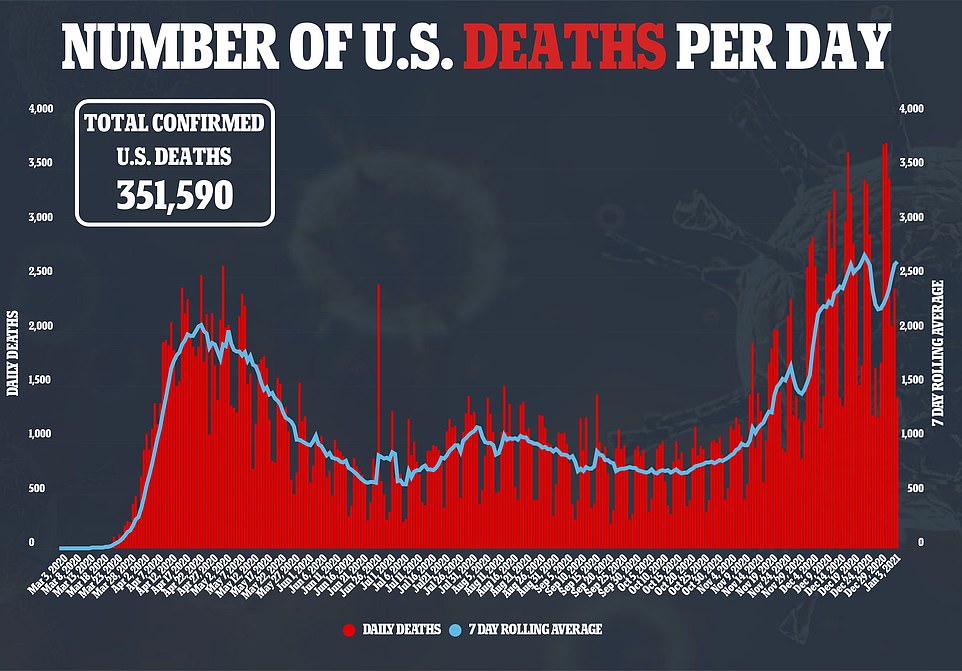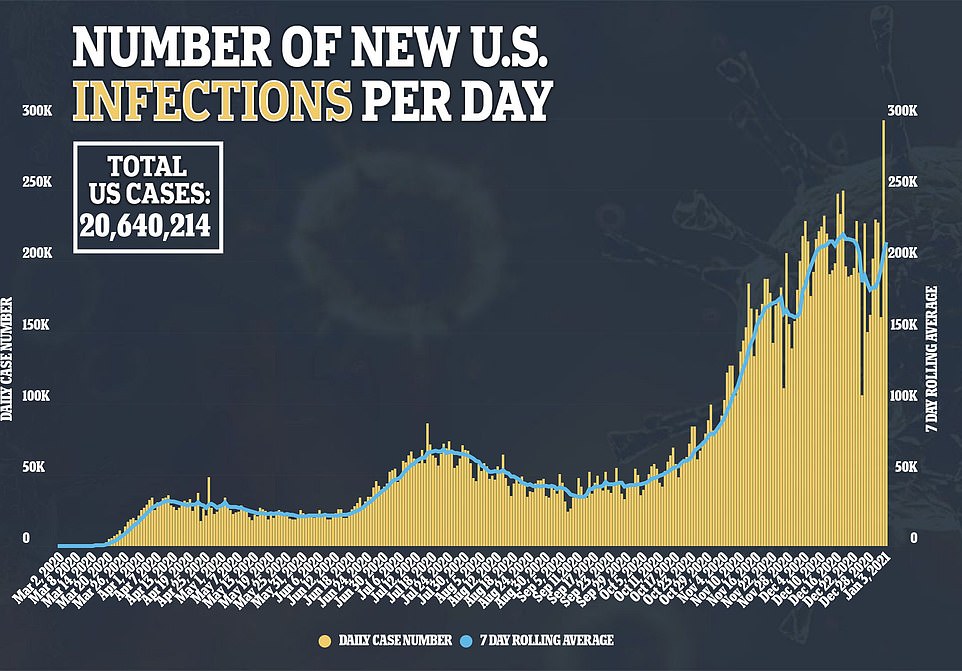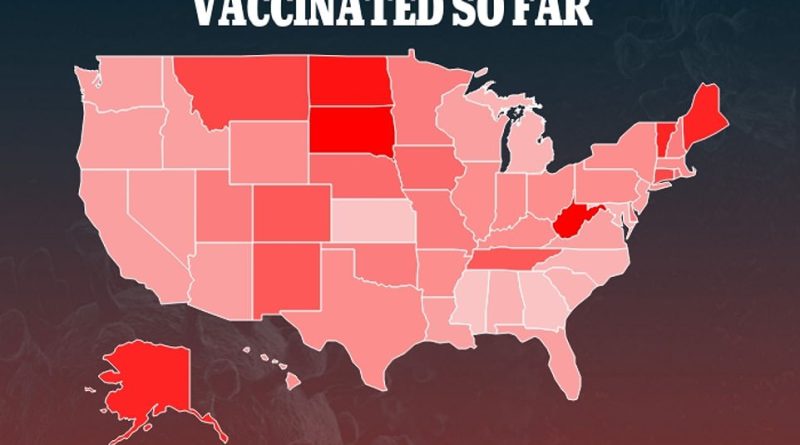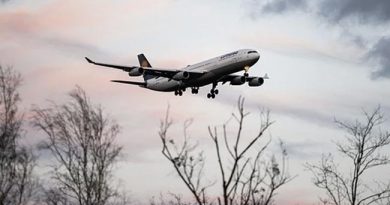US has only administered 4.3 million COVID-19 vaccine shots
Only 4.3 million COVID-19 vaccines have been administered across the US almost a month into the agonizingly slow vaccination campaign – as it is revealed that Georgia and Kansas have used less than 20 percent of the vaccines distributed to them and New York City is only handing out shots during office hours.
Federal officials had vowed to administer 20 million vaccine doses across the US before the New Year but, as of Monday, only 13 million doses had been distributed to states.
Just 4.3 million of those doses – or 33 percent – have been administered so far, according to a Bloomberg analysis of CDC and state government data.
It means just 1.3 percent of the US population has been vaccinated almost a month into the stumbling campaign as cases, deaths and hospitalizations continue to surge across the country.
Health officials, however, have said that the US ramped up vaccinations in the past few days and Dr Anthony Fauci said he has seen ‘some little glimmer of hope’ after 1.5 million doses were administered over a 72-hour period over the weekend.
It comes as the UK on Monday began administering its third easy-to-use vaccine shot, which was created by Oxford University/AstraZeneca but is not approved for use in the US.
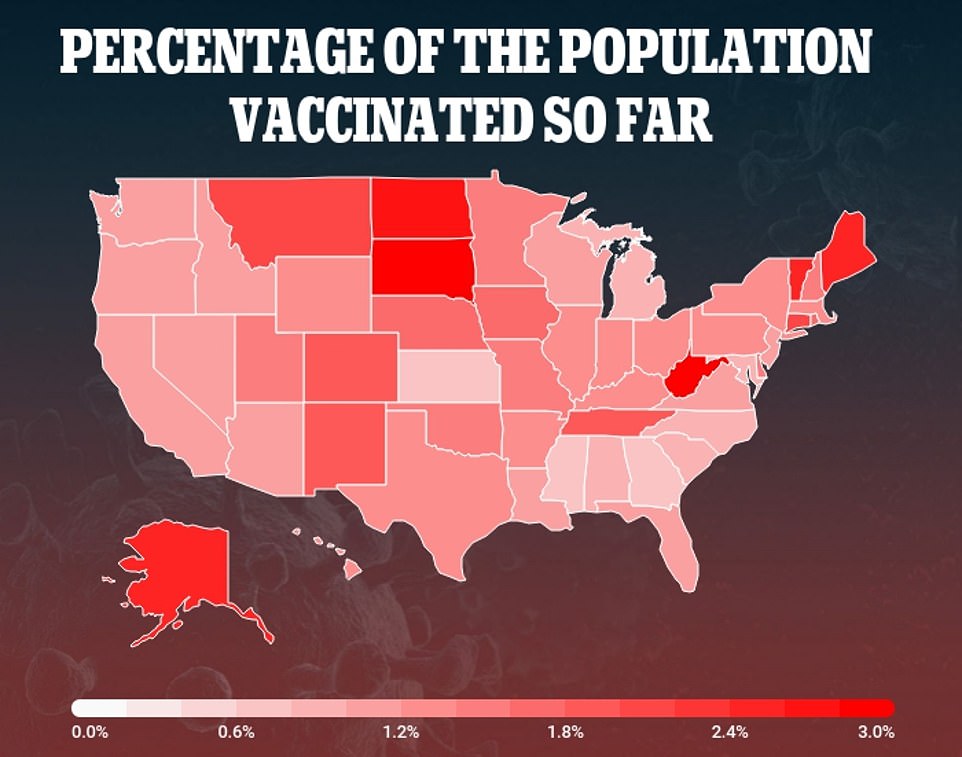
Federal officials had vowed to administer 20 million vaccine doses across the US before the New Year but, as of Monday, only 13 million doses had been distributed to states. Just 4.3 million of those doses – or 33 percent – have been administered so far
According to a state-by-state breakdown, Kansas and Georgia have only administered 17 percent of the doses distributed to them under the federal Operation Warp Speed vaccine program.
California, which is currently the hardest hit state with new cases per capita, has so far used 28 percent of its vaccine shots.
Meanwhile, only a handful of states have already used more than 50 percent of the shots distributed to them: South Dakota (70%), Connecticut (64%), North Dakota (63%), Maine (62%), Ohio (54%), Vermont (51%), Iowa (50%) and West Virginia (50%).
Officials in New York City have revealed that COVID-19 vaccines in the former US virus epicenter are currently only being administered during business hours.
Just over 104,000 doses have been administered in NYC, which is about 26 percent of the shots they have been allocated.
NYC Councilman Mark Levine has called for at least one vaccination site in each zipcode to be opened 24 hours.
‘Vaccination in New York City is basically only occurring during regular business hours. Very little on weekends. Almost none on holidays,’ he tweeted.
‘We are in a war-like situation. We need to be vaccinating twenty four seven. We are losing precious time.’
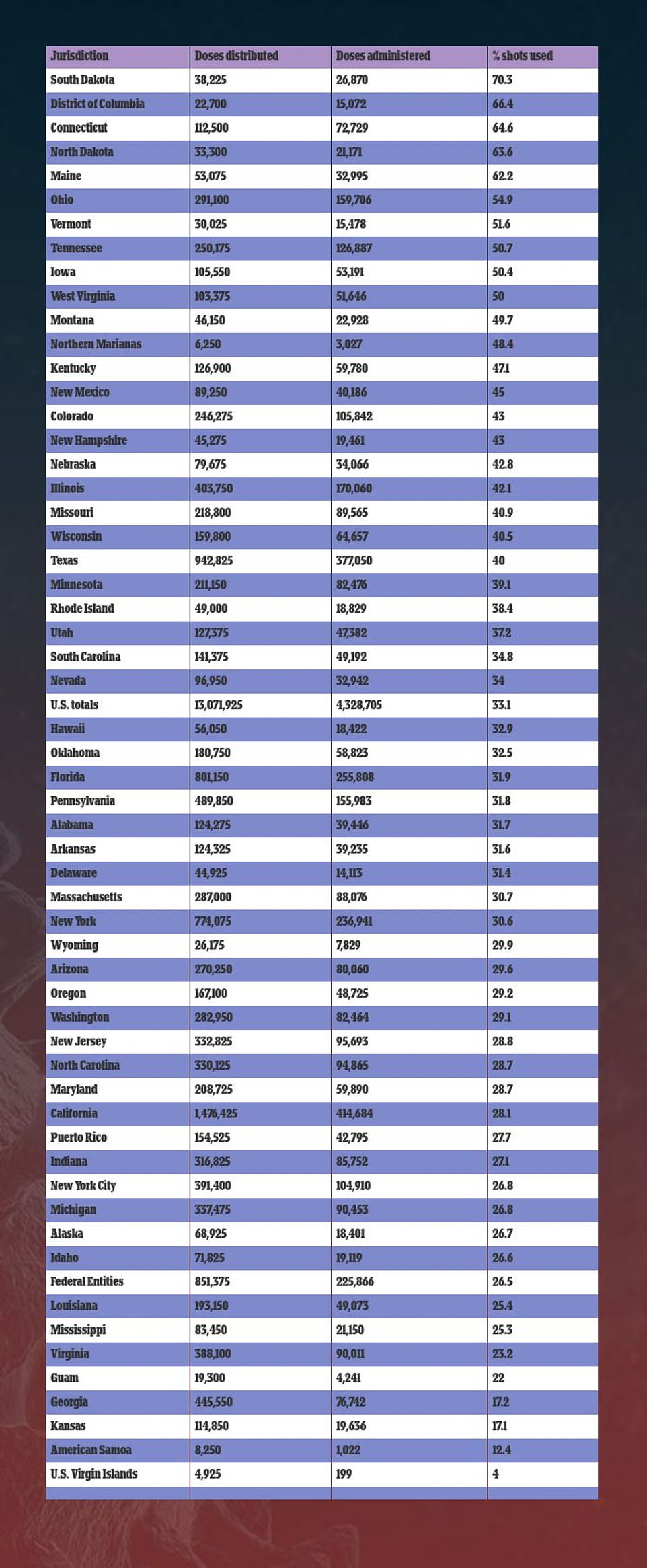
According to a state-by-state breakdown, Kansas and Georgia have only administered 17 percent of the doses distributed to them under the federal Operation Warp Speed vaccine program
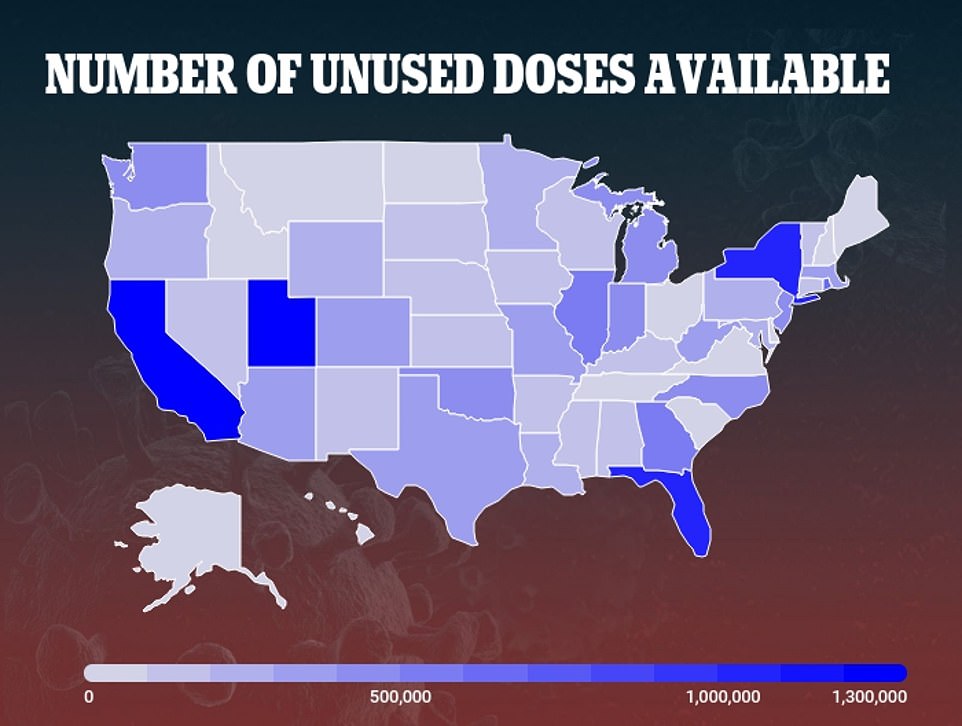
Fauci has acknowledged the US has fallen short of its goal of having 20 million doses shipped and distributed by the end of December.
‘There have been a couple of glitches. That’s understandable,’ Fauci said on NBC’s Meet the Press. ‘We are not where we want to be, there’s no doubt about that.’
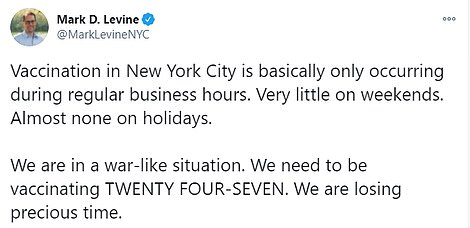
NYC Councilman Mark Levine has called for at least one vaccination site in each zipcode to be opened 24 hours
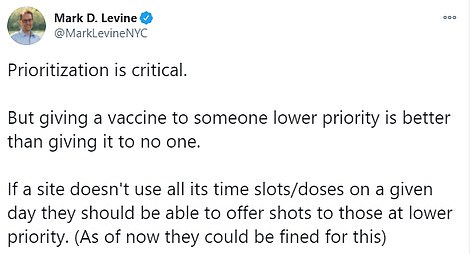
He expressed optimism, however, that the momentum will pick up by mid-January and that ultimately the US will be vaccinating 1 million people a day.
Fauci said that Joe Biden’s ‘goal of vaccinating 100 million people in the first 100 days is a realistic goal’.
The failure to speedily vaccinate millions of Americans has already been blamed on various factors, including lack of federal ov
ersights and chaotic distribution.
The 20 million-dose goal hasn’t been reached in part because local health departments and medical facilities had to stay focused on testing to handle a surge in cases, US Surgeon General Jerome Adams said, adding that the holiday season meant health workers were taking time off.
Adams said he, too, expects vaccinations to ‘rapidly ramp up in the new year.’
President Donald Trump blamed local authorities for the delays, tweeting on the weekend that ‘the vaccines are being delivered to the states by the Federal Government far faster than they can be administered!’
Adams said part of the problem was that ‘a lot of the local capacity to be able to vaccinate was being used for testing and responding to surges.’
Troubling reports have emerged of vaccines going bad due to poor organization, lack of healthcare professionals to administer them or, in one isolated case, sabotage.
Some people have also waited in line for hours only to be turned away.
In Tennessee, elder citizens, some with walkers, were reported standing along a busy highway while waiting for their vaccinations.
Elderly residents in Florida camped out overnight last week to be able to receive the first doses.
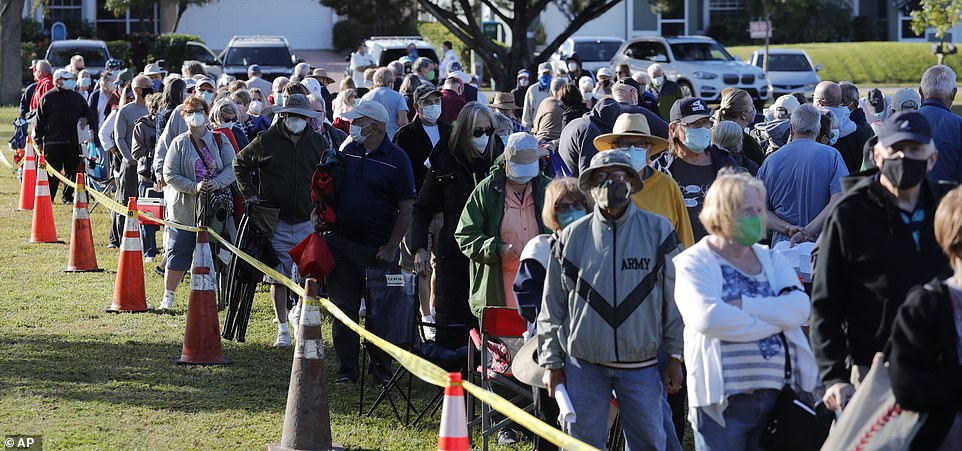
Hundreds of residents in Florida lined up – some overnight – to be able to receive a COVID-19 shot
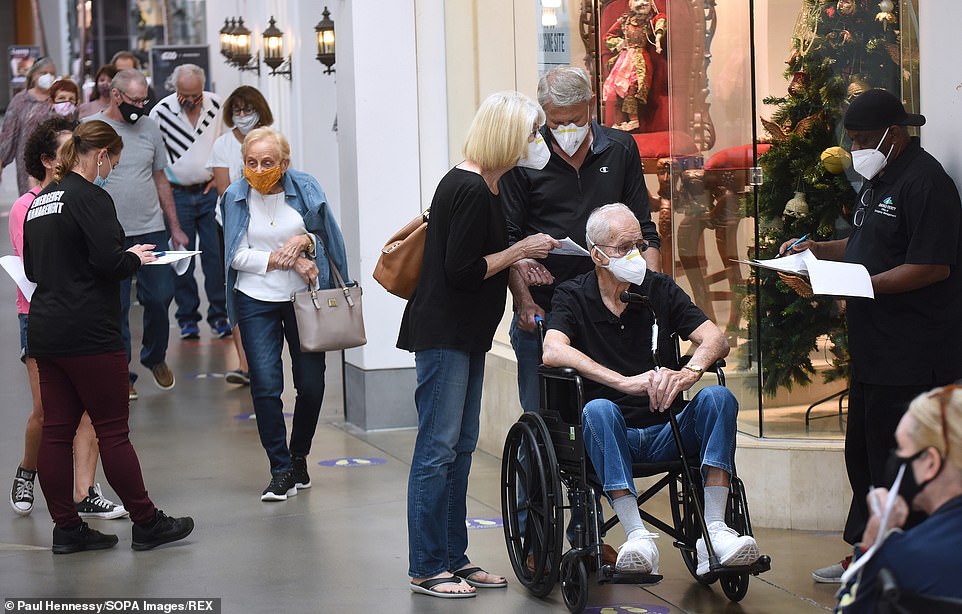
People wait in a line on New Year’s Eve to receive a COVID-19 vaccination in Florida
Moncef Slaoui, the chief advisor to Operation Warp Speed, the military-led US vaccine effort, told CBS there was an ‘assumption’ that states had plans in place to administer the vaccine.
‘We need to improve,’ he said.
‘We will do the best we can, as we have done over the last eight months, to make (certain) these vaccines indeed make it into the arms of people.’
Another alternative is being explored for the Moderna vaccine, he said: administer half-doses, twice.
‘We know it induces identical immune response,’ he said.
Slaoui said research has shown that being injected with just half the dose of the Moderna vaccine ‘induces an identical immune response’ for people between the ages of 18 and 55.
Under a new proposal, all people in that age category would still be injected twice, but each dose would be halved.
Slaoui says that would allow medics to ‘immunize double the number of people with the doses currently available’.
He said the government was in discussion with both Moderna and the FDA about the idea.
‘I think it’ a responsible approach that is be based on facts and data to immunize more people,’ he said.
Both Moderna and Pfizer’s COVID-19 vaccines require two doses taken either 21 days or 28 days apart.
More than 13 million vaccine vials have been distributed, but many of those shots are being held in storage to serve as the second dose for 4 million-plus people who have already had their first jab.
Some critics have argued that as many people as possible should be injected with their first dose now, and receive their second dose once supplies are topped up.
Slaoui, however, has rejected that idea.
‘It’s not reasonable when vaccines have been developed with two doses given 21 days apart or 28 days apart, and we have the data on that safety and that efficacy [to suddenly change plans],’ he said.
‘We have no data [about what happens] if we leave people after one dose for one month, two month, three months, with maybe incomplete immunity, waning immunity, or even the wrong kind of immune response.’
